
The Bromeliaceae is a family of monocot flowering plants of 75 genera and around 3590 known species native mainly to the tropical Americas, with several species found in the American subtropics and one in tropical west Africa, Pitcairnia feliciana.
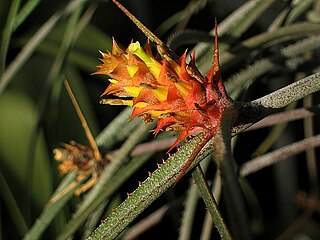
Acanthostachys is a genus of the botanical family Bromeliaceae, subfamily Bromelioideae. The genus name is from the Greek “acanthos” and “stachys”.

Araeococcus is a genus of the botanical family Bromeliaceae, subfamily Bromelioideae. It is native to northern South America, Central America and Trinidad.

Canistrum is a genus of plants in the family Bromeliaceae, subfamily Bromelioideae.
Cottendorfia is a genus of plants in the family Bromeliaceae. The genus name is for Johann Georg Freiherr Cotta von Cottendorf, German patron of the sciences (1796-1863).

Cryptanthus is a genus of flowering plants in the family Bromeliaceae, subfamily Bromelioideae. The genus name is from the Greek cryptos (hidden) and anthos (flower). This genus has two recognized subgenera: the type subgenus and HoplocryptanthusMez. All species of this genus are endemic to Brazil. The common name for any Cryptanthus is "Earth star".
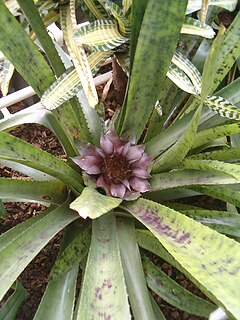
Wittrockia is a genus of plants in the family Bromeliaceae, subfamily Bromelioideae.

Orthophytum is a genus in the plant family Bromeliaceae, subfamily Bromelioideae.
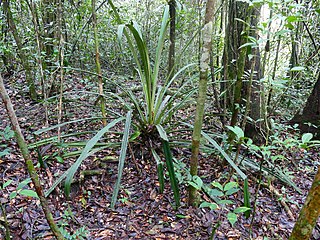
Disteganthus is a genus of plants in the family Bromeliaceae, subfamily Bromelioideae. The genus name is from the Greek “dis” (two), “steg” (covering), and “anthos” (flower). They are considered a primitive genus among bromeliads and are only found in terrestrial environments. Distenganthus has three known species, native to northeastern South America.

Hohenbergia is a genus of plants in the family Bromeliaceae, subfamily Bromelioideae. It is native to the West Indies, the Yucatán Peninsula, and northern South America.
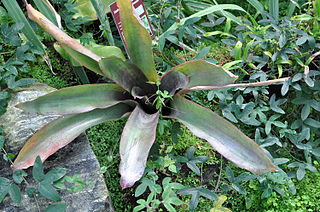
Hohenbergiopsis is a genus of plants in the family Bromeliaceae, subfamily Bromelioideae. The genus name is from the genus Hohenbergia and the Greek opsis (resembling) because it resembles the genus Hohenbergia. It contains only one known species, Hohenbergiopsis guatemalensis, native to Oaxaca, Chiapas, and Guatemala.
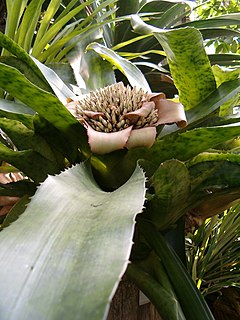
Edmundoa is a genus of plants in the family Bromeliaceae, subfamily Bromelioideae. The genus is named for Edmundo Pereira, Brazilian botanist (1914–1986) and has only recently been recognized as an independent genus, grouped earlier with Canistrum.
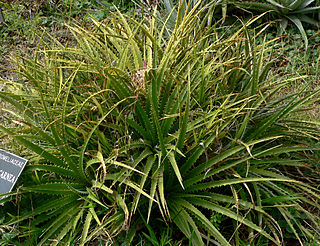
Ochagavia is a plant genus in the plant family Bromeliaceae, subfamily Bromelioideae. The genus is named for Sylvestris Ochagavia, Chilean minister of education. Endemic to southern and central Chile, this genus is represented by four accepted species.

Ronnbergia is a genus in the plant family Bromeliaceae, subfamily Bromelioideae. Native to South and Central America, this genus was named for Auguste Ronnberg, Belgian Director of Agriculture and Horticulture in 1874.

Lymania is a genus in the plant family Bromeliaceae, subfamily Bromelioideae. The genus was established in 1984 to "unite furrowed or winged species from Aechmea subgenera Lamprococcus, Araeococcus and Ronnbergia.".
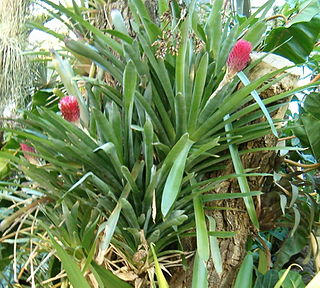
Quesnelia is a genus of plants in the family Bromeliaceae, subfamily Bromelioideae. The genus is named after French businessman and patron of botany Edouard Prosper Quesnel, of Le Havre (1781-1850). Endemic to eastern Brazil, this genus contains 22 known species. This genus has two recognized subgenera: the type subgenus and BillbergiopsisMez.

Canistropsis is a genus of plants in the family Bromeliaceae, subfamily Bromelioideae.

Portea is a genus in the plant family Bromeliaceae, subfamily Bromelioideae. It is native to the Atlantic coast of Brazil.
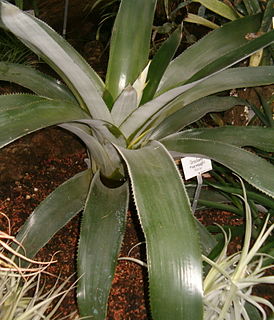
Ursulaea is a genus in the plant family Bromeliaceae, subfamily Bromelioideae. Represented by two known species, these plants are endemic to Mexico.
Eduandrea is a monotypic genus plants in the family Bromeliaceae, subfamily Bromelioideae.



















